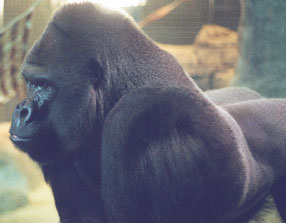tense-mouth face: This is like staring but the gums and teeth are displayed having the lips curled back (Estes, 1991). This is a threat display for potential predators, mostly given by adult males, and is often accompanied by a mock charge and scream and roars (Estes, 1991).
